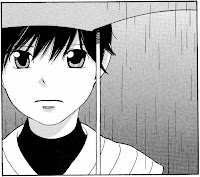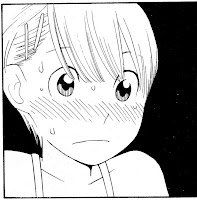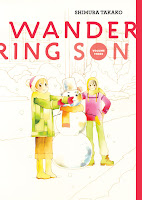 Creator: Takako Shimura
Creator: Takako Shimura
U.S. publisher: Fantagraphics Books
ISBN: 9781606996058
Released: April 2013
Original release: 2006
Wandering Son, Volume 4 by Takako Shimura was originally released in Japan in 2005. After several delays, the English-language edition of the volume from Fantagraphics was published in 2013. It was a long wait between the third and fourth volumes and, unfortunately, a scattering of editing errors still made their way into the manga. However, I am extremely happy to finally have it in my hands. Fantagraphics began releasing Wandering Son in 2011 in a beautiful oversized hardcover edition. I have been reading Wandering Son since the beginning. It’s an incredibly important series to me personally; I would not be exaggerating to call it life-changing. I am thrilled and terrified by each volume that Fantagraphics releases because the manga hits so close to home for me. Wandering Son is a wonderful series exploring many aspects of personal identity, including gender and sexuality, with great sincerity and sensitivity.
After Shuichi and Maho were accepted as a pair for a modeling project, the two siblings have grown closer; both were subject to direct and indirect bullying and pressure from the other models and they had to look out for each other. But now that Maho is starting to get along with the other girls, she and Shuichi have started to drift apart. Feeling abandoned and uncomfortable with Maho’s new friends, Shuichi even goes as far as to stop modeling. At school things are a little better—at least for a time. After a brief falling out Shuichi and Takatsuki have made up and have started their exchange diary again with a renewed fervor. Shuichi has also become very close with Makoto, another classmate. But while some friendships flourish, others start to wither. Add to all that burgeoning feelings of love and romantic interest and suddenly sixth grade becomes even more complicated.
Makoto probably states it best when he declares “feelings are such difficult things.” That is a major theme in Wandering Son, Volume 4. Shuichi, Takatsuki, and their friends and classmates are beginning to grapple not only with who they are as individuals but who they are in relation to other people. Shimura captures the constantly shifting dynamics of their relationships in a very convincing and realistic way. Friendships are tested and strained as the characters begin to try to figure out just who means what to whom. It’s heartbreaking to see those friendships, which are so incredibly important to them, falling apart as jealousy and sheer awkwardness put them in jeopardy. At the same time, there are some characters who are able to forge even stronger bonds with one another due to all the turmoil.
Takatsuki and Shuichi are still clearly the protagonists of Wandering Son but Shimura doesn’t forget any of the young people in the fourth volume. Even the classroom bullies are shown to have their own problems and issues to work through. All of the characters have their strengths and weaknesses. This includes Shuichi, with whom everyone seems to fall in love, who exhibits a willingness to wallow in self-pity. As nostalgic as Wandering Son can be, the middle school years haven’t been idealized in the series. With all of the romantic entanglements introduced in Wandering Son, Volume 4 the manga is building up to the next volume in which the characters enter seventh grade and puberty. Middle school is challenging and difficult enough, but junior high promises to be even more so. Wandering Son is more about characters than a linear plot, but the fourth volume is an important setup for what comes next in the series.






